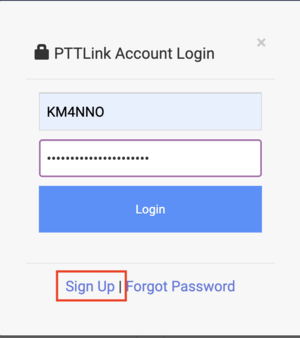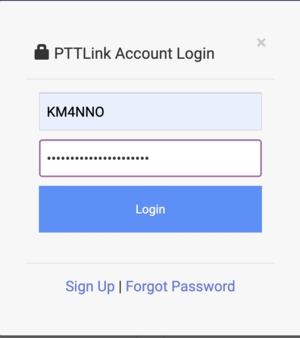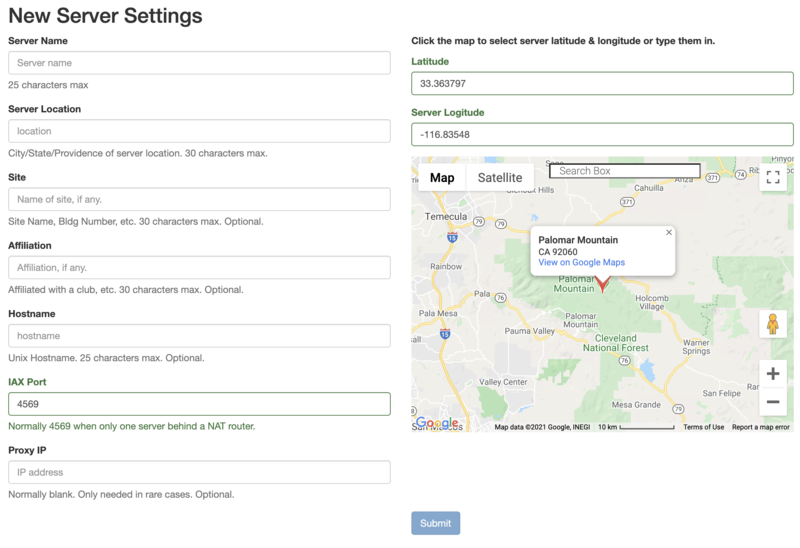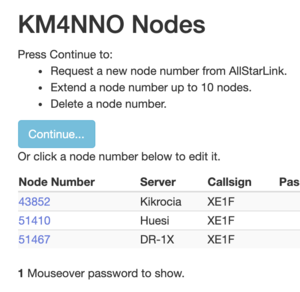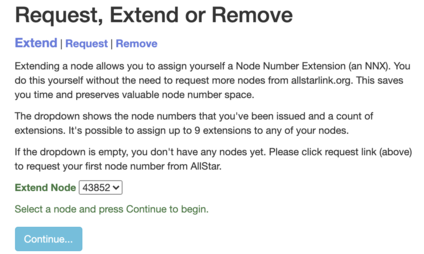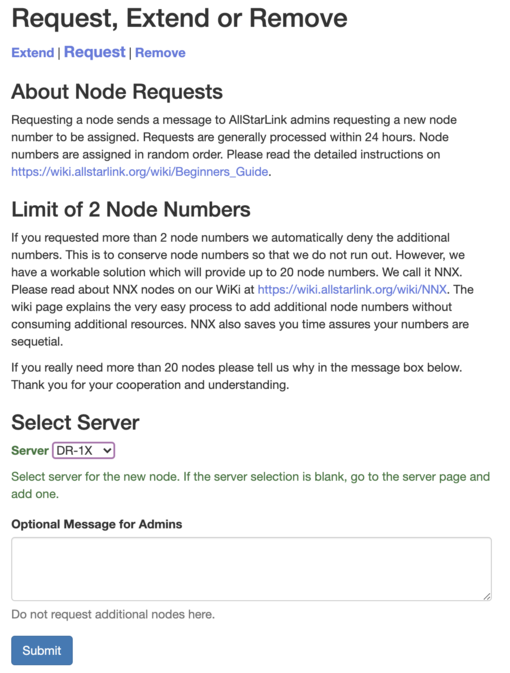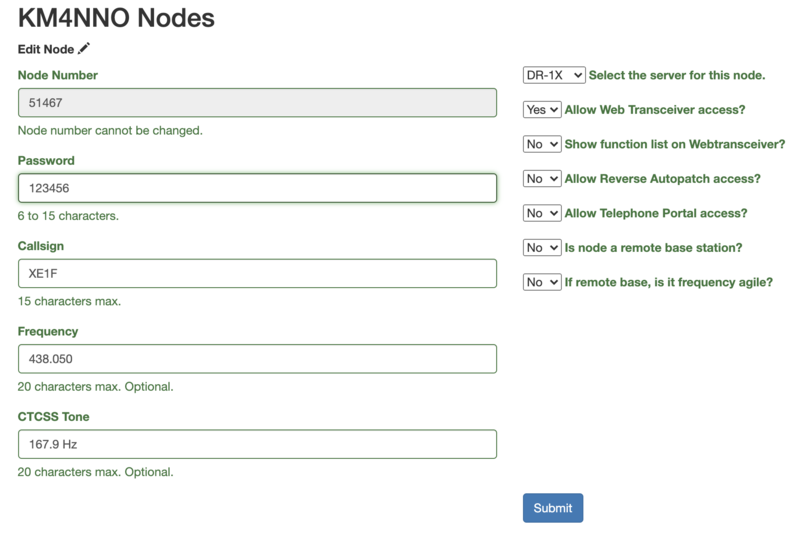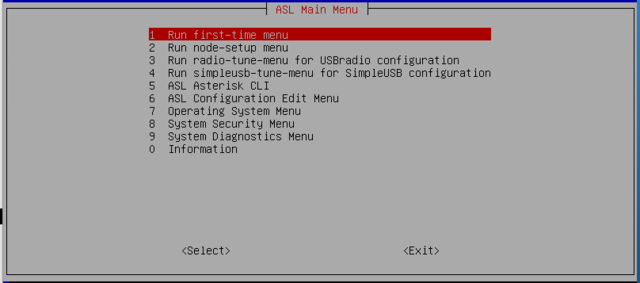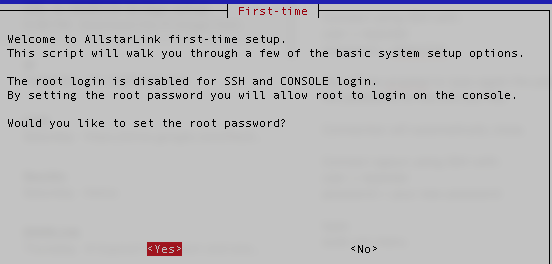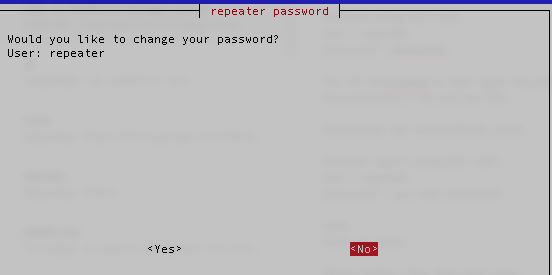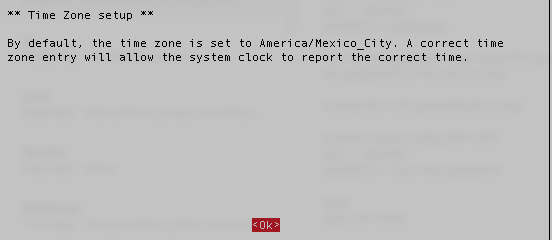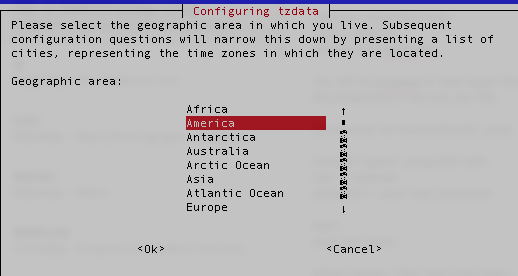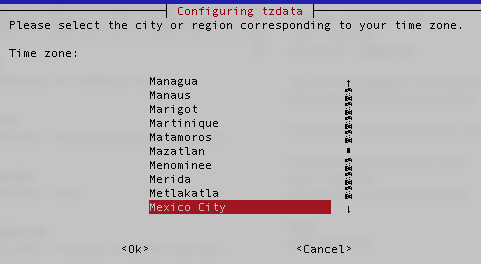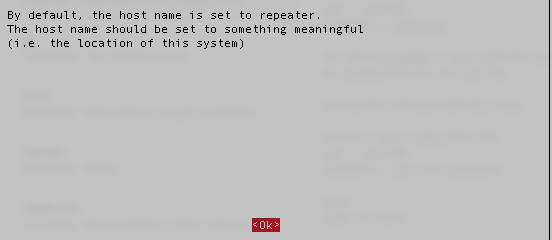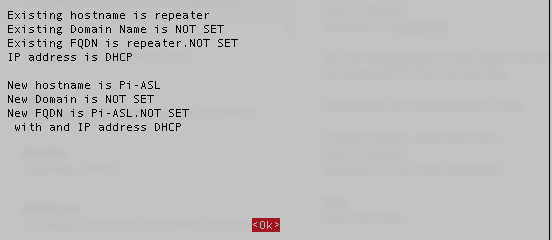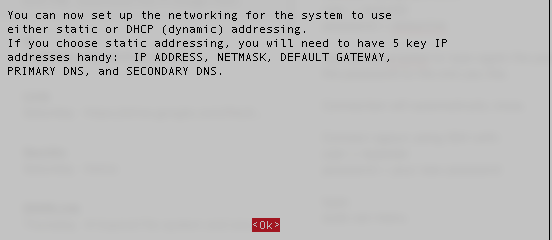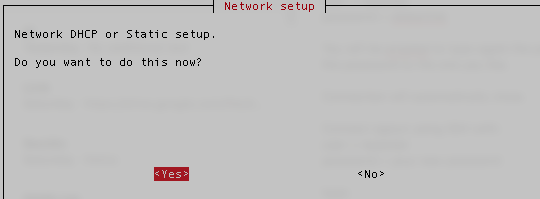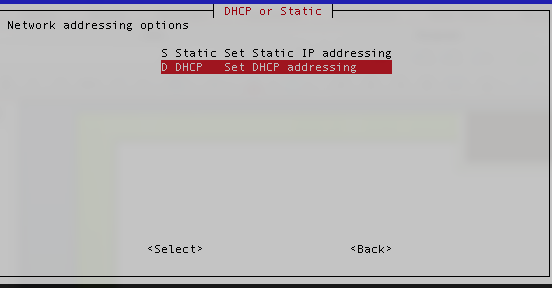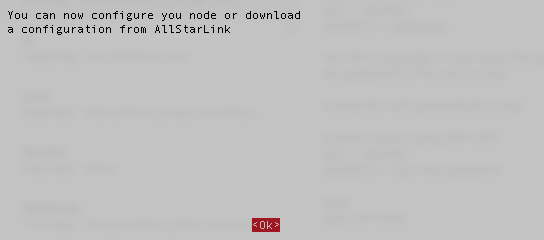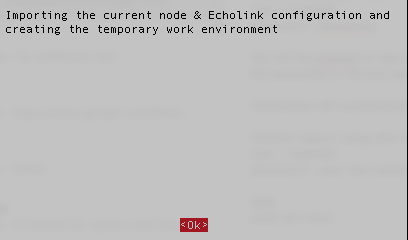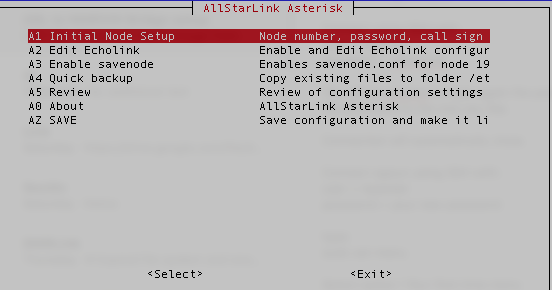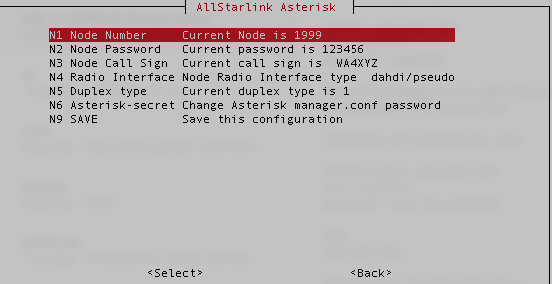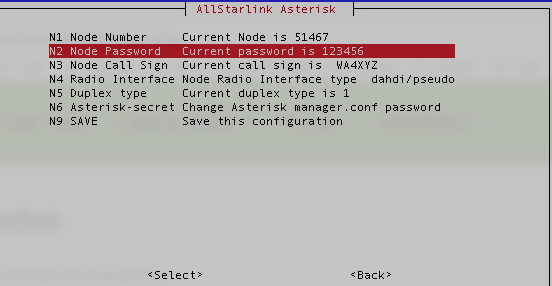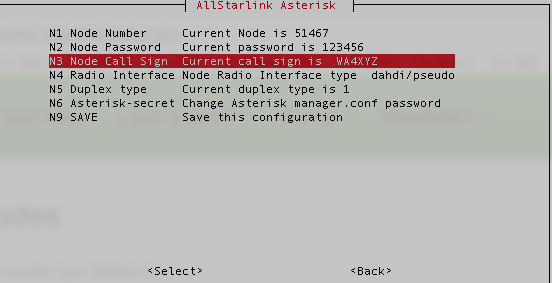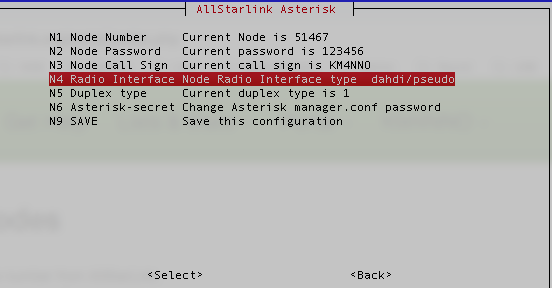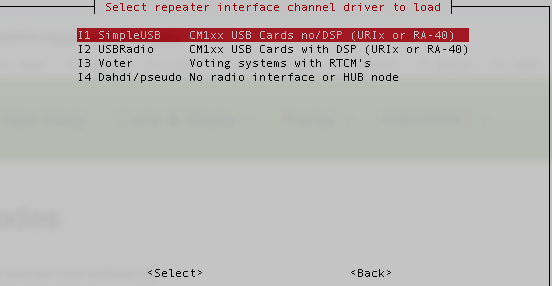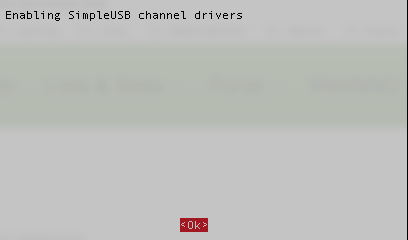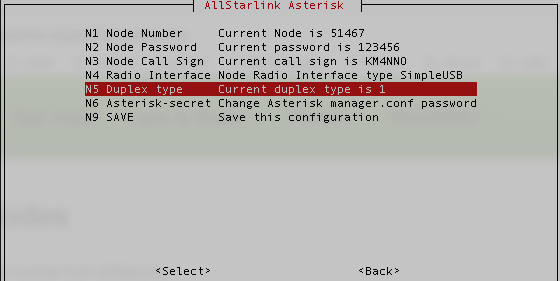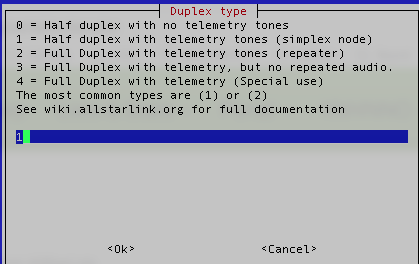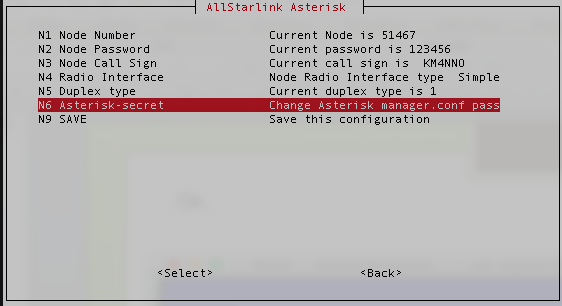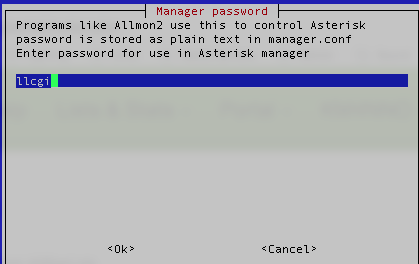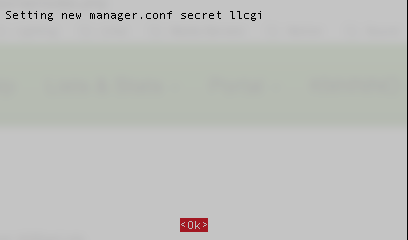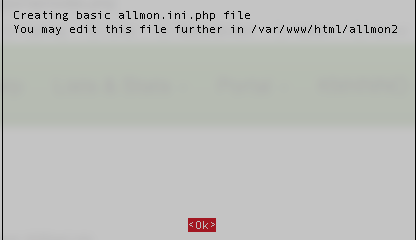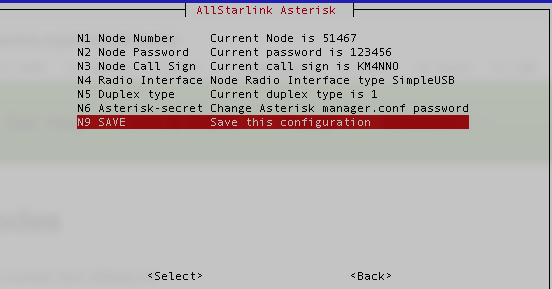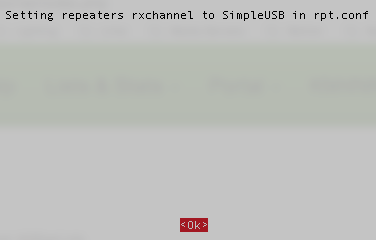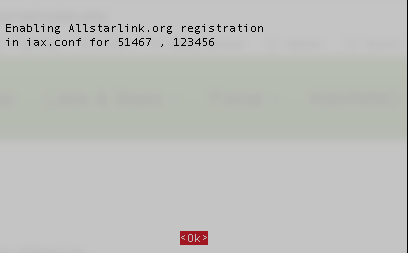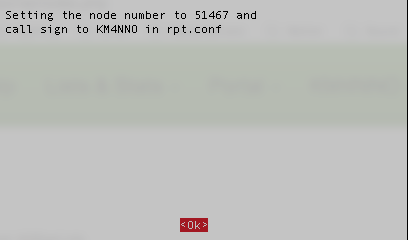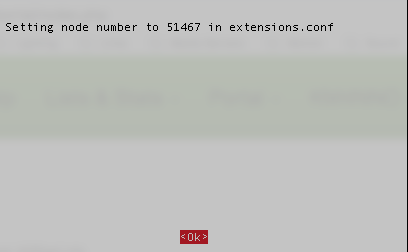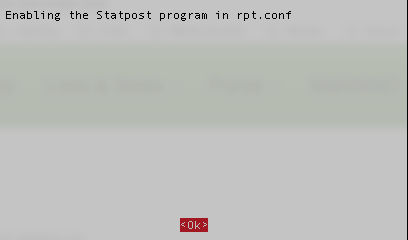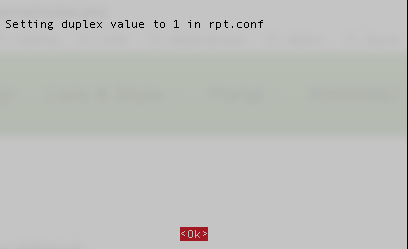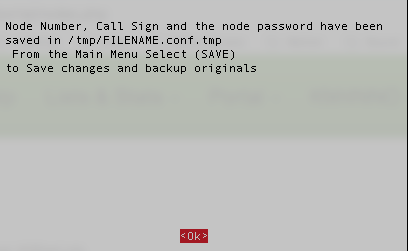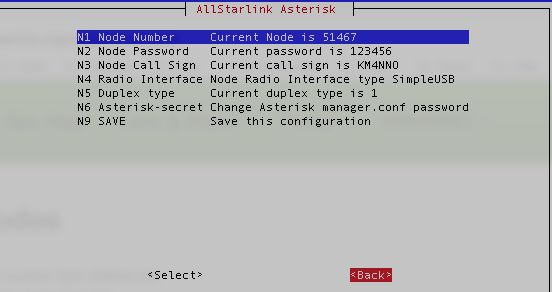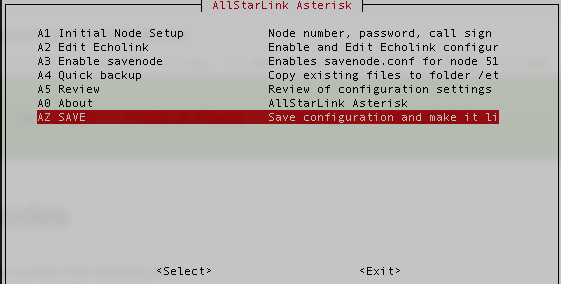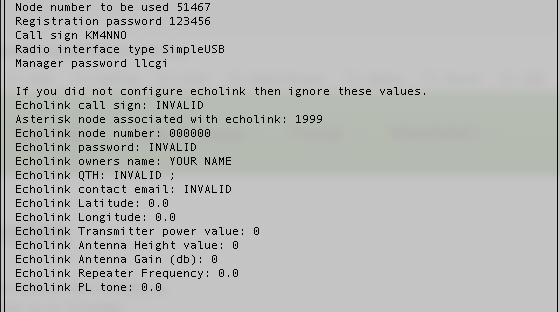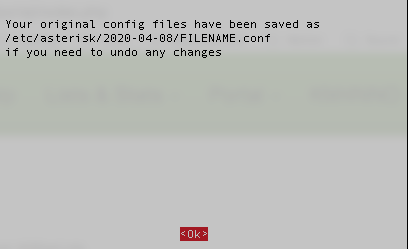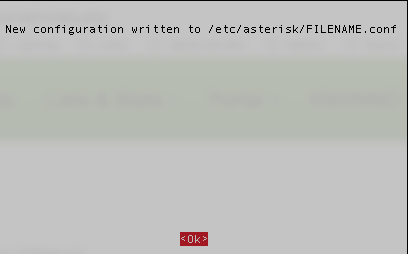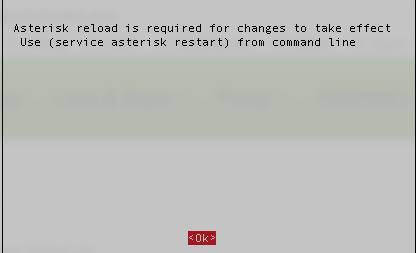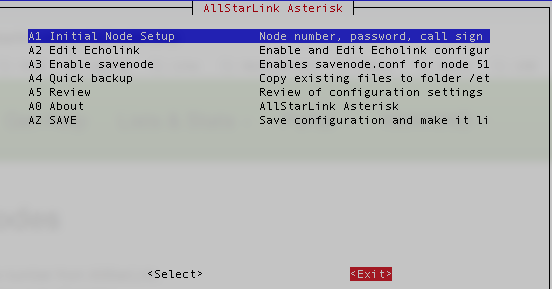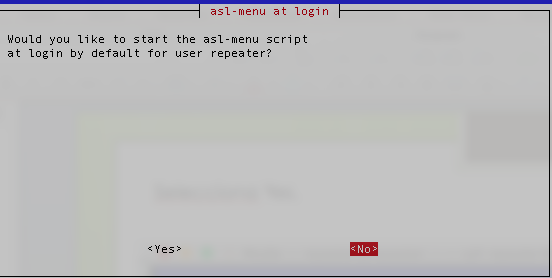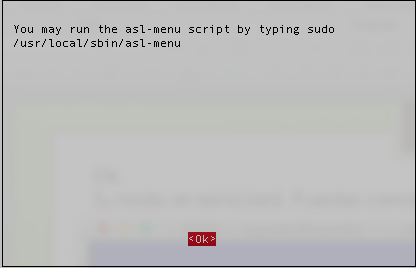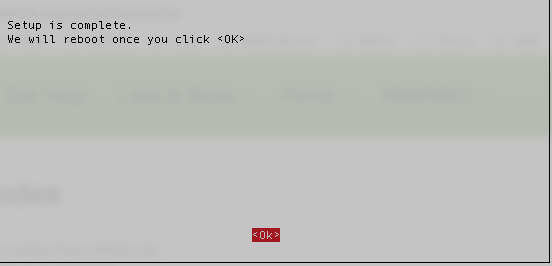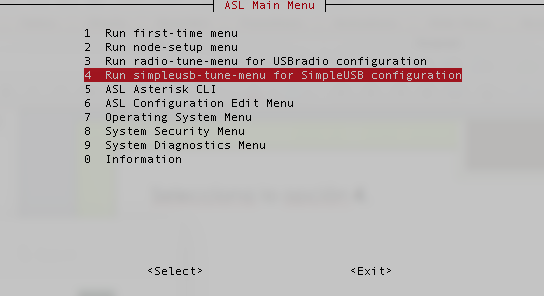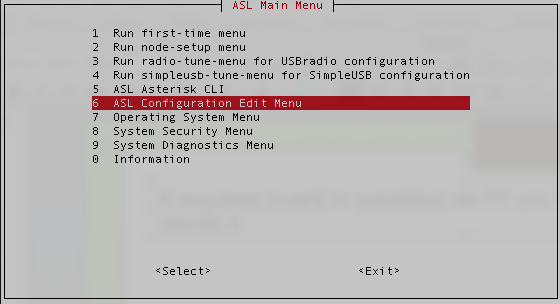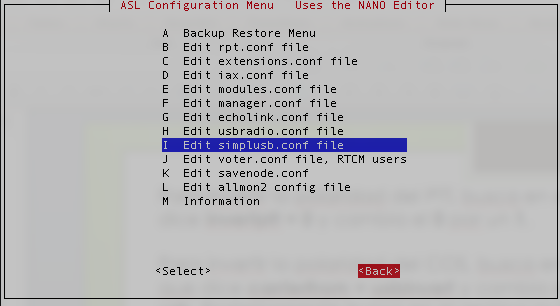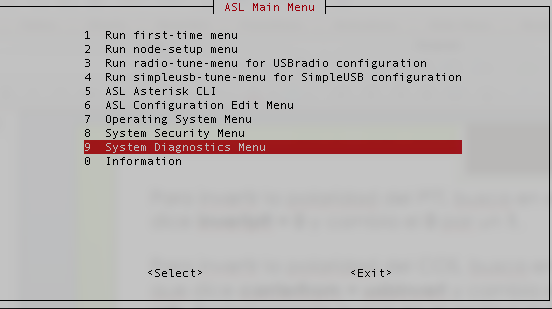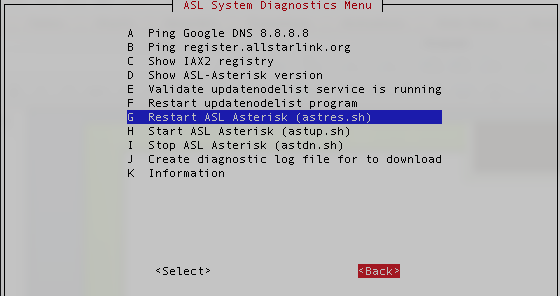Difference between revisions of "Beginners Guide"
m |
|||
| (32 intermediate revisions by 2 users not shown) | |||
| Line 1: | Line 1: | ||
| + | [[Category: How to]] | ||
PTTLink for beginners. | PTTLink for beginners. | ||
| Line 4: | Line 5: | ||
Go to https://pttlink.org/ and click on the '''<Login/Sign Up>''' link. | Go to https://pttlink.org/ and click on the '''<Login/Sign Up>''' link. | ||
| − | [[File:Ptt site menu login.png|none|thumb|545x545px]]Next click the '''<Sign Up>''' link.[[File:Ptt_site sign up.png|none|thumb | + | |
| + | [[File:Ptt site menu login.png|none|thumb|545x545px]] | ||
| + | |||
| + | Next click the '''<Sign Up>''' link. | ||
| + | |||
| + | [[File:Ptt_site sign up.png|none|thumb]] | ||
== Download PTTLink image file == | == Download PTTLink image file == | ||
| Line 12: | Line 18: | ||
Go to [[Main_Page#Downloads|wiki.pttlink.org]] scroll down to the Downloads section and select the appropriate image for the type of system you will use. | Go to [[Main_Page#Downloads|wiki.pttlink.org]] scroll down to the Downloads section and select the appropriate image for the type of system you will use. | ||
| − | [[File: | + | [[File:ASL download.png|none|thumb]] |
Write the image file to media. Either a USB memory stick, CD or DVD, or a microSD card (Raspberry Pi). | Write the image file to media. Either a USB memory stick, CD or DVD, or a microSD card (Raspberry Pi). | ||
| Line 19: | Line 25: | ||
You will need to login to your account at [https://pttlink.org/ https://PTTLink.org/] | You will need to login to your account at [https://pttlink.org/ https://PTTLink.org/] | ||
| − | [[File: | + | [[File:Ptt site menu login.png|none|thumb|579x579px]] |
Click on <'''Login/Sign Up>''' as shown in the image above. | Click on <'''Login/Sign Up>''' as shown in the image above. | ||
| − | [[File: | + | [[File:Ptt site login.png|none|thumb]] |
== Create a Server == | == Create a Server == | ||
| Line 41: | Line 47: | ||
At the top of the page, click '''<Portal>''' and then on '''<Node Settings>'''. | At the top of the page, click '''<Portal>''' and then on '''<Node Settings>'''. | ||
| − | [[File:Ptt site node settings.png|none|thumb| | + | [[File:Ptt site node settings.png|none|thumb|565x565px]] |
Then click '''<Continue...>'''. | Then click '''<Continue...>'''. | ||
| − | [[File:ptt site request node number 1.png|none|thumb | + | [[File:ptt site request node number 1.png|none|thumb]] |
Then click '''<Request>'''. | Then click '''<Request>'''. | ||
| − | [[File:ptt site request node number 2.png|none|thumb| | + | [[File:ptt site request node number 2.png|none|thumb|424x424px]] |
Select which server you would wish to have a node number assigned to. | Select which server you would wish to have a node number assigned to. | ||
A comment of 'additional node on same server' would be appropriate if you are requesting a second node number. | A comment of 'additional node on same server' would be appropriate if you are requesting a second node number. | ||
| − | [[File:ptt site request node number 3.png|none|thumb| | + | [[File:ptt site request node number 3.png|none|thumb|673x673px]] |
Once your node number request(s) are processed you will receive an email. | Once your node number request(s) are processed you will receive an email. | ||
| Line 69: | Line 75: | ||
Fill in the information for you node and click '''<Submit>'''. | Fill in the information for you node and click '''<Submit>'''. | ||
| − | [[File:ptt node settings form.png|none|thumb|800x800px]] | + | [[File:ptt site node settings form.png|none|thumb|800x800px]] |
Write down your node number, password and the call sign you assigned for the node as you will use them to configure your PTTLink system. | Write down your node number, password and the call sign you assigned for the node as you will use them to configure your PTTLink system. | ||
| − | == Install and configure | + | |
| + | == Install and configure PttLink to your computer == | ||
Consult your owners manual or your favorite internet search engine for how to install an image for your computer system. | Consult your owners manual or your favorite internet search engine for how to install an image for your computer system. | ||
| Line 79: | Line 86: | ||
Install the PTTLink disk image to your computer. Insert the appropriate media for your system and boot the computer. | Install the PTTLink disk image to your computer. Insert the appropriate media for your system and boot the computer. | ||
| − | When the login prompt appears enter the user ID of '''repeater''' and press '''<Enter>'''. | + | When the login prompt appears enter the user ID of |
| + | |||
| + | '''repeater''' | ||
| + | |||
| + | and press '''<Enter>'''. | ||
| − | Enter the default password of ''' | + | Enter the default password of |
| + | '''allstarlink''' | ||
Follow the on screen instructions for the initial password change. | Follow the on screen instructions for the initial password change. | ||
| Line 87: | Line 99: | ||
For users familiar with the linux operation system you may proceed to edit the system manually. | For users familiar with the linux operation system you may proceed to edit the system manually. | ||
| − | For users not familiar with linux and | + | For users not familiar with linux and PttLink, at the Linux CLI (command line interface) |
| − | Type '''sudo | + | Type '''sudo asl-menu''' as the example below shows. |
| − | + | repeater@repeater:~$ sudo asl-menu | |
This will load the PTTLink configuration menu. | This will load the PTTLink configuration menu. | ||
| − | [[File: | + | [[File:Asl menu main screen.png|none|thumb|640x640px]] |
== PTTLink software setup == | == PTTLink software setup == | ||
Choose option '''<1>'''. | Choose option '''<1>'''. | ||
| − | [[File: | + | [[File:002_first_time.png|none|thumb|640x640px]] |
| + | |||
| + | Since it is your first time setup, answer '''<Yes>''' so you can setup a "'''root'''" password. Don't forget to write down your user an password. | ||
| + | [[File:003_password.png|none|thumb|640x640px]] | ||
Setup now will ask if you want to change "'''repeater'''" account password with you should already changed at first time login so answer '''<No>''', unless you want to change it again. Do not forget to write it down. | Setup now will ask if you want to change "'''repeater'''" account password with you should already changed at first time login so answer '''<No>''', unless you want to change it again. Do not forget to write it down. | ||
| − | [[File: | + | [[File:004_repeater_password.png|none|thumb|640x640px]] |
| − | |||
| − | |||
| − | |||
| − | |||
| − | Now | + | Now lets set time zone '''<Ok>'''. |
| − | [[File: | + | [[File:005_timezone.png|none|thumb|640x640px]] |
Choose the node's continent. | Choose the node's continent. | ||
| − | [[File: | + | [[File:006_continent.png|none|thumb|640x640px]] |
Choose the node's city. | Choose the node's city. | ||
| − | [[File: | + | [[File:007_city.png|none|thumb|640x640px]] |
Next you can change the name of you host name, the default is '''repeater'''. | Next you can change the name of you host name, the default is '''repeater'''. | ||
| − | [[File: | + | [[File:008_message.png|none|thumb|640x640px]] |
| + | |||
| + | Answer '''<Yes>''' to be able to make changes. | ||
| + | [[File:009_edit_hostname.png|none|thumb|640x640px]] | ||
Type the new host name and hit '''<Enter>'''. | Type the new host name and hit '''<Enter>'''. | ||
| − | [[File: | + | [[File:010_hostname.png|none|thumb|640x640px]] |
If you want to set up a domain, type it and hit '''<Enter>'''. | If you want to set up a domain, type it and hit '''<Enter>'''. | ||
| − | [[File: | + | [[File:011_domain_name.png|none|thumb|640x640px]] |
Say '''<Ok>''' to this message. | Say '''<Ok>''' to this message. | ||
| − | [[File: | + | [[File:012_message.png|none|thumb|640x640px]] |
Now you can make your network settings '''<Ok>'''. | Now you can make your network settings '''<Ok>'''. | ||
| − | [[File: | + | [[File:013_dhcp.png|none|thumb|640x640px]] |
Just say '''<Ok>''' to this message. | Just say '''<Ok>''' to this message. | ||
| − | [[File: | + | [[File:014_network.png|none|thumb|640x640px]] |
To choose between DHCP or Static IP say '''<Yes>'''. | To choose between DHCP or Static IP say '''<Yes>'''. | ||
| − | [[File: | + | [[File:015_dhcp_static.png|none|thumb|640x640px]] |
Use '''<D>''' for DHCP or '''<nowiki><S></nowiki>'''. for Static, if you choose Static, you will be asked to enter it next, for this example DHCP is in use. | Use '''<D>''' for DHCP or '''<nowiki><S></nowiki>'''. for Static, if you choose Static, you will be asked to enter it next, for this example DHCP is in use. | ||
| − | [[File: | + | [[File:016_dhcp_static.png|none|thumb|640x640px]] |
Just say '''<Ok>''' to this message. | Just say '''<Ok>''' to this message. | ||
| − | [[File: | + | [[File:017_message.png|none|thumb|640x640px]] |
| − | |||
| − | |||
| − | |||
Just say '''<Ok>''' to this message. | Just say '''<Ok>''' to this message. | ||
| − | [[File: | + | [[File:018_message.png|none|thumb|640x640px]] |
Just say '''<Ok>''' to this message. | Just say '''<Ok>''' to this message. | ||
| − | [[File: | + | [[File:019_message.png|none|thumb|640x640px]] |
Choose option '''<A1>'''. | Choose option '''<A1>'''. | ||
| − | [[File: | + | [[File:020_a_menu_a1.png|none|thumb|640x640px]] |
Choose option '''<N1>'''. | Choose option '''<N1>'''. | ||
| − | [[File: | + | [[File:021_n_menu_n1.png|none|thumb|640x640px]] |
Type the node number for your node. Yes the one you previously wrote down from PTTLink site. | Type the node number for your node. Yes the one you previously wrote down from PTTLink site. | ||
| − | [[File: | + | [[File:022_node_number.png|none|thumb|640x640px]] |
Choose option '''<N2>'''. | Choose option '''<N2>'''. | ||
| − | [[File: | + | [[File:023_n_menu_n2.png|none|thumb|640x640px]] |
Type the node password for your node. Yes the one you previously wrote down from PTTLink site. | Type the node password for your node. Yes the one you previously wrote down from PTTLink site. | ||
| − | [[File: | + | [[File:024_node_password.png|none|thumb|640x640px]] |
Choose option '''<N3>'''. | Choose option '''<N3>'''. | ||
| − | [[File: | + | [[File:025_n_menu_n3.png|none|thumb|640x640px]] |
Type the call sign for your node. Yes the one you previously wrote down from PTTLink site. | Type the call sign for your node. Yes the one you previously wrote down from PTTLink site. | ||
| − | [[File: | + | [[File:026_callsign.png|none|thumb|640x640px]] |
Choose option '''<N4>'''. | Choose option '''<N4>'''. | ||
| − | [[File: | + | [[File:027_n_menu_n4.png|none|thumb|640x640px]] |
Choose option '''<I1>'''. | Choose option '''<I1>'''. | ||
| − | [[File: | + | [[File:028_i_menu_i1.png|none|thumb|640x640px]] |
Just say '''<Ok>''' to this message. | Just say '''<Ok>''' to this message. | ||
| − | [[File: | + | [[File:029_message.png|none|thumb|640x640px]] |
Choose option '''<N5>'''. | Choose option '''<N5>'''. | ||
| − | [[File: | + | [[File:030_n_menu_n5.png|none|thumb|640x640px]] |
If your node will be a simplex node type '''<1>'''. | If your node will be a simplex node type '''<1>'''. | ||
If your node is a repeater controller type '''<2>'''. | If your node is a repeater controller type '''<2>'''. | ||
| − | [[File: | + | [[File:031_rptr_mode.png|none|thumb|640x640px]] |
Choose option '''<N6>'''. | Choose option '''<N6>'''. | ||
| − | [[File: | + | [[File:032_n_menu_n6.png|none|thumb|640x640px]] |
Type a new password, this will be used to have access from the nodes web site Allmon2, the default password is 'llcgi'. | Type a new password, this will be used to have access from the nodes web site Allmon2, the default password is 'llcgi'. | ||
| − | [[File: | + | [[File:033_password.png|none|thumb|640x640px]] |
Just say '''<Ok>''' to this message. | Just say '''<Ok>''' to this message. | ||
| − | [[File: | + | [[File:034_message.png|none|thumb|640x640px]] |
Just say '''<Ok>''' to this message. | Just say '''<Ok>''' to this message. | ||
| − | [[File: | + | [[File:036_message.png|none|thumb|640x640px]] |
Choose option '''<N9>'''. | Choose option '''<N9>'''. | ||
| − | [[File: | + | [[File:037_n_menu_n9.png|none|thumb|640x640px]] |
Just say '''<Ok>''' to this message. | Just say '''<Ok>''' to this message. | ||
| − | [[File: | + | [[File:038_message.png|none|thumb|640x640px]] |
Just say '''<Ok>''' to this message. | Just say '''<Ok>''' to this message. | ||
| − | [[File: | + | [[File:039_message.png|none|thumb|640x640px]] |
Just say '''<Ok>''' to this message. | Just say '''<Ok>''' to this message. | ||
| − | [[File: | + | [[File:040_message.png|none|thumb|640x640px]] |
Just say '''<Ok>''' to this message. | Just say '''<Ok>''' to this message. | ||
| − | [[File: | + | [[File:041_message.png|none|thumb|640x640px]] |
Just say '''<Ok>''' to this message. | Just say '''<Ok>''' to this message. | ||
| − | [[File: | + | [[File:042_message.png|none|thumb|640x640px]] |
Just say '''<Ok>''' to this message. | Just say '''<Ok>''' to this message. | ||
| − | [[File: | + | [[File:043_message.png|none|thumb|640x640px]] |
Just say '''<Ok>''' to this message. | Just say '''<Ok>''' to this message. | ||
| − | [[File: | + | [[File:044_message.png|none|thumb|640x640px]] |
Choose option '''<Back>'''. | Choose option '''<Back>'''. | ||
| − | [[File: | + | [[File:045_n_menu_back.png|none|thumb|640x640px]] |
Choose option '''<AZ>'''. | Choose option '''<AZ>'''. | ||
| − | [[File: | + | [[File:046_a_menu_az.png|none|thumb|640x640px]] |
| − | Review what you wrote down with what you have configured on your | + | Review what you wrote down with what you have configured on your systemand press '''<Enter>'''. |
| − | [[File: | + | [[File:047_review.png|none|thumb|640x640px]] |
Choose '''<Yes>''' to backup your configuration. | Choose '''<Yes>''' to backup your configuration. | ||
| − | [[File: | + | [[File:048_backup.png|none|thumb|640x640px]] |
Just say '''<Ok>''' to this message. | Just say '''<Ok>''' to this message. | ||
| − | [[File: | + | [[File:049_message.png|none|thumb|640x640px]] |
Just say '''<Ok>''' to this message. | Just say '''<Ok>''' to this message. | ||
| − | [[File: | + | [[File:050_message.png|none|thumb|640x640px]] |
Just say '''<Ok>''' to this message. | Just say '''<Ok>''' to this message. | ||
| − | [[File: | + | [[File:051_message.png|none|thumb|640x640px]] |
Choose option '''<Exit>'''. | Choose option '''<Exit>'''. | ||
| − | [[File: | + | [[File:052_a-menu_exit.png|none|thumb|640x640px]] |
Answer '''<Yes>''', because we already saved our configuration. | Answer '''<Yes>''', because we already saved our configuration. | ||
| − | [[File: | + | [[File:053_exit.png|none|thumb|640x640px]] |
If you want to automatically start your system with this menu answer '''<Yes>''', if not then '''<No>'''. | If you want to automatically start your system with this menu answer '''<Yes>''', if not then '''<No>'''. | ||
| − | [[File: | + | [[File:054_select_menu_sartup.png|none|thumb|640x640px]] |
| − | If you answer was '''<No>''', remember you can come back to this menu typing '''sudo | + | If you answer was '''<No>''', remember you can come back to this menu typing '''sudo asl-menu''' as the following example: |
| − | + | repeater@repeater:~$ sudo asl-menu | |
| − | [[File: | + | [[File:055_message.png|none|thumb|640x640px]] |
Now your node will reboot to apply all the changes we have done, so say '''<Ok>'''. | Now your node will reboot to apply all the changes we have done, so say '''<Ok>'''. | ||
| − | [[File: | + | [[File:056_reboot.png|none|thumb|640x640px]] |
== PTTLink Audio settings with SimpleUSB == | == PTTLink Audio settings with SimpleUSB == | ||
| + | Once you've hooked up a radio with your desired interface, it's time to test and tune the audio from the radio. | ||
| − | type '''sudo | + | type '''sudo asl-menu''' like the example below: |
| − | + | repeater@repeater:~$ sudo asl-menu | |
Choose option '''<4>'''. | Choose option '''<4>'''. | ||
| − | [[File: | + | [[File:101_asl_menu_4.png|none|thumb|640x640px]] |
With option '''<F>''', will trigger PTT few times on your radio for testing, you should also listen a test tone. | With option '''<F>''', will trigger PTT few times on your radio for testing, you should also listen a test tone. | ||
| Line 286: | Line 298: | ||
To achieve that, you can type values between 0 and 999 and press '''<Enter>''' to apply the new value. The system will Tx a test tone for 5 seconds. If you do not set any value and hit '''<Enter>''', you will exit this function keeping the last typed value on RAM. | To achieve that, you can type values between 0 and 999 and press '''<Enter>''' to apply the new value. The system will Tx a test tone for 5 seconds. If you do not set any value and hit '''<Enter>''', you will exit this function keeping the last typed value on RAM. | ||
| − | Do not forget to turn | + | Do not forget to turn of the tone generator by pressing once again '''<T>'''. |
Once you are happy with your settings, type '''<W>''' and '''<Enter>'''. | Once you are happy with your settings, type '''<W>''' and '''<Enter>'''. | ||
To exit from this menu type '''<0>''' (zero) and hit '''<Enter>'''. | To exit from this menu type '''<0>''' (zero) and hit '''<Enter>'''. | ||
| − | |||
== PTT and COS polarity settings == | == PTT and COS polarity settings == | ||
| − | + | Your radio may require PTT and/or COS/CTCSS polarity to be inverted to work properly. To do this, go to the main ASL menu and choose option '''<6>'''. | |
| − | [[File: | + | [[File:103_asl_menu_6.png|none|thumb|640x640px]] |
Choose option '''<nowiki><I></nowiki>'''. | Choose option '''<nowiki><I></nowiki>'''. | ||
| − | [[File: | + | [[File:104_config_menu_i.png|none|thumb|640x640px]] |
| − | You will be | + | You will be taken to a text file where you will need to find and edit some values: |
PTT invert: | PTT invert: | ||
| − | Search for the line | + | Search for the line begining with '''invertptt =''' and change its value as follows: |
| − | '''0''' = Ground to Transmit. | + | '''0''' = Ground to Transmit (most common). |
'''1''' = Open to Transmit. | '''1''' = Open to Transmit. | ||
| − | [[File: | + | [[File:Ptt_invertptt.png|none|thumb|640x640px]] |
COS/CTCSS invert: | COS/CTCSS invert: | ||
| − | Search for the line | + | Search for the line beginning with '''carrierfrom =''' and change its value as follows. |
| − | Search for the line | + | Search for the line beginning with '''ctcssfrom =''' and change its value as follows. |
'''no''' = No carrier detection at all. | '''no''' = No carrier detection at all. | ||
| − | '''usb''' = | + | '''usb''' = COR (COS) line active Hi. |
| − | '''usbinvert''' = | + | '''usbinvert''' = COR (COS) line active Low. |
| − | [[File: | + | [[File:Ptt_invertcarrier.png|none|thumb|640x640px]] |
After making your changes type '''<CTRL> + <X>''' and then type '''<Y>''' followed by '''<Enter>'''. You will be back to the previous menu and choose '''<Back>'''. | After making your changes type '''<CTRL> + <X>''' and then type '''<Y>''' followed by '''<Enter>'''. You will be back to the previous menu and choose '''<Back>'''. | ||
Choose Option '''<9>'''. | Choose Option '''<9>'''. | ||
| − | [[File: | + | [[File:107_asl_menu_9.png|none|thumb|640x640px]] |
| + | |||
| + | Choose option '''<G>''' to restart PTTLink software and apply changes. Choose '''<Back>''', repeat your audio test if needed. | ||
| + | [[File:108_diag_menu_g.png|none|thumb|640x640px]] | ||
| + | |||
| + | == Ensure the nodelist is downloading == | ||
| + | Before your node will connect it needs to have the nodelist available. This file will automatically be downloaded by systems support scripts and placed into /var/lib/asterisk/rpt_nodes. | ||
| + | |||
| + | If for some reason your node never downloads the nodelist, it may mean you are missing the required support scripts and configuration. | ||
| + | |||
| + | === Add missing NodeUpdate.sh and NodeNameUpdate.sh scripts === | ||
| + | Copy the following if you are missing the scripts below in /usr/local/bin and do not have contab entries that call them | ||
| + | |||
| + | * Copy the following to /usr/local/bin/NodeUpdate.sh | ||
| + | <syntaxhighlight lang="sh"> | ||
| + | #!/bin/bash | ||
| + | # | ||
| + | # A cron job script for downloading the extnodes file with error reporting | ||
| + | # | ||
| + | # | ||
| + | # This is intended to be run from cron every 5 min | ||
| + | # Copyright 2018 Bryan Fields | ||
| + | # Licensed under the GNU GPLv2 | ||
| + | |||
| + | URL="http://register.pttlink.org/cgi-bin/gennodes.php" | ||
| + | FILEPATH=/var/lib/asterisk | ||
| + | |||
| + | #sleep for a random time of 0-300 seconds | ||
| + | #sleep $[( $RANDOM % 299 ) + 1 ]s | ||
| + | |||
| + | |||
| + | # use curl in silent and compressed mode, connect timeout of 5 and | ||
| + | # -f for fail with an error code of 22 on server errors | ||
| + | #-m 20 is a max time for the whole process of 20 seconds | ||
| + | curl -s --compressed --connect-timeout 5 -f -m 20 -o /tmp/rpt_extnodes-temp $URL | ||
| + | #curl --connect-timeout 5 -f -m 20 -o /tmp/rpt_extnodes-temp $URL | ||
| + | exitcode=$? | ||
| + | if [ "$exitcode" = "0" ]; then | ||
| + | grep -q extnodes /tmp/rpt_extnodes-temp | ||
| + | if [ $? -eq "0" ] ;then | ||
| + | chmod 700 /tmp/rpt_extnodes-temp | ||
| + | cp /tmp/rpt_extnodes-temp $FILEPATH/rpt_extnodes-temp | ||
| + | mv -f $FILEPATH/rpt_extnodes-temp $FILEPATH/rpt_extnodes | ||
| + | whenandwhere=`grep "Generated at" /tmp/rpt_extnodes-temp |cut -c2-100` | ||
| + | #don't print out on good run | ||
| + | #echo "NodeUpdate installed a new nodes list $whenandwhere" | ||
| + | logger -i "NodeUpdate installed a new nodes list $whenandwhere" | ||
| + | else | ||
| + | #echo "NodeUpdate failed to parse node list; node list not updated" | ||
| + | logger -i "NodeUpdate failed to parse node list; node list not updated" | ||
| + | exit 1 | ||
| + | fi | ||
| + | |||
| + | else | ||
| + | #echo "NodeUpdate could not get nodes list from server" | ||
| + | logger -i "NodeUpdate could not get nodes list from server" | ||
| + | exit 1 | ||
| + | fi | ||
| + | exit 0 | ||
| + | </syntaxhighlight> | ||
| + | * Copy the following to /usr/local/bin/NodeNameUpdate.sh | ||
| + | <syntaxhighlight lang="sh"> | ||
| + | #!/bin/bash | ||
| + | # | ||
| + | # A cron job script for downloading custom node announcements with error reporting | ||
| + | # | ||
| + | # This is intended to be run from cron every 8 hours and will randomly insert a delay from 0-8 hours | ||
| + | # | ||
| + | # Copyright 2018 Bryan Fields | ||
| + | # Licensed under the GNU GPLv2 | ||
| + | |||
| + | URL="rsync://rsync.pttlink.org/connect-messages" | ||
| + | FILEPATH="/var/lib/asterisk/sounds/rpt/nodenames" | ||
| + | |||
| + | #sleep for a random time of 0-28800 seconds (8 hours) | ||
| + | sleep $[ ( $RANDOM % 28799 ) + 1 ]s | ||
| + | |||
| + | #assign the filesUpdated var with the number of files changed by rsync. This is nasty, but it works. | ||
| + | |||
| + | filesUpdated=`rsync -a --stats $URL $FILEPATH |grep "Number of regular files transferred" | cut -c 38-50` | ||
| + | exitcode=$? | ||
| + | if [ "$exitcode" = "0" ]; then | ||
| + | if [ "$filesUpdated" = "0" ]; then | ||
| + | echo "NodeNameUpdate run with no updates" | ||
| + | logger -i "NodeNameUpdate run with no updates" | ||
| + | elif [ "$filesUpdated" > "0" ]; then | ||
| + | echo "NodeNameUpdate updated $filesUpdated nodenames" | ||
| + | logger -i "NodeNameUpdate updated $filesUpdated nodenames" | ||
| + | fi | ||
| + | else | ||
| + | echo "NodeNameUpdate failed" | ||
| + | logger -i "NodeUpdate failed" | ||
| + | exit 1 | ||
| + | fi | ||
| + | exit 0 | ||
| + | </syntaxhighlight> | ||
| + | * Add entries to crontab | ||
| + | <syntaxhighlight lang="text"> | ||
| + | 0 0,8,16 * * * root /usr/local/bin/NodeNameUpdate.sh > /dev/null 2>&1 | ||
| + | */5 * * * * root /usr/local/bin/NodeUpdate.sh > /dev/null 2>&1 | ||
| + | 01 03 * * * cd /var/www/html/allmon2; ./astdb.php | ||
| + | </syntaxhighlight> | ||
| + | |||
| + | == PTTLink Configuration Updates == | ||
| + | Run the following commands to add PTTLink server address. | ||
| + | |||
| + | <pre> | ||
| + | sudo sed -i 's/allstarlink.org/pttlink.org/g' /usr/local/bin/rc.updatenodelist | ||
| + | sudo sed -i 's/allstarlink.org/pttlink.org/g' /usr/local/bin/NodeNameUpdate.sh | ||
| + | sudo sed -i 's/allstarlink.org/pttlink.org/g' /usr/local/bin/NodeUpdate.sh | ||
| + | sudo sed -i 's/allstarlink.org/pttlink.org/g' /etc/asterisk/rpt.conf | ||
| + | sudo sed -i 's/allstarlink.org/pttlink.org/g' /etc/asterisk/iax.conf | ||
| + | sudo sed -i 's/allstarlink.org/pttlink.org/g' /etc/asterisk/extensions.conf | ||
| − | + | sudo sed -i 's/allstarlink.org/pttlink.org/g' /var/www/html/allmon2/astdb.php | |
| − | + | sudo sed -i 's/Allstar /PTTLink / g' /var/www/html/allmon2/header.inc | |
| + | sudo sed -i 's/allstarlink.org/pttlink.org/g' /var/www/html/allmon2/link.php | ||
| + | sudo service asterisk restart | ||
| + | </pre> | ||
| − | + | Edit the following file with: | |
| − | + | <pre> | |
| + | sudo nano /usr/local/sbin/astdb.php | ||
| + | </pre> | ||
| + | Replace line: | ||
| − | + | <pre> | |
| + | $url = "https://allstarlink.org/cgi-bin/allmondb.pl"; | ||
| + | </pre> | ||
| + | with: | ||
| − | = | + | <pre> |
| + | $url = "http://allmondb.pttlink.org"; | ||
| + | </pre> | ||
| − | + | Restart your system. | |
| − | + | sudo reboot | |
| − | + | At this point your node should be up and running. | |
| − | == | + | == Allmon2 Setup. == |
| − | + | *[[Allmon2 Install]] - Allmon2 setup. | |
Latest revision as of 17:52, 18 April 2022
PTTLink for beginners.
The first step is to create an account.
Go to https://pttlink.org/ and click on the <Login/Sign Up> link.
Next click the <Sign Up> link.
Download PTTLink image file
While you are awaiting the verification of your account (usually within 24 hours) you may download one of the image files for you computer system you will use to run your PTTLink node.
Go to wiki.pttlink.org scroll down to the Downloads section and select the appropriate image for the type of system you will use.
Write the image file to media. Either a USB memory stick, CD or DVD, or a microSD card (Raspberry Pi).
Login to your account
You will need to login to your account at https://PTTLink.org/
Click on <Login/Sign Up> as shown in the image above.
Create a Server
You will need to create a "server" : Click on <Portal> then <Server Settings>.
Click on <Add a new server>.
Please take the time to read the instructions on each page.
Then click <Proceed with Server Setup> if needed.
Fill in all of the information and click <Submit> at the bottom of the page.
Request a Node number
At the top of the page, click <Portal> and then on <Node Settings>.
Then click <Continue...>.
Then click <Request>.
Select which server you would wish to have a node number assigned to.
A comment of 'additional node on same server' would be appropriate if you are requesting a second node number.
Once your node number request(s) are processed you will receive an email.
Edit Node settings
Log into your account on https://pttlink.org/
Click <Portal> then <Node settings>.
The PTTLink node numbers that have been assigned to you are displayed here.
Select which node you wish to view/edit.
Fill in the information for you node and click <Submit>.
Write down your node number, password and the call sign you assigned for the node as you will use them to configure your PTTLink system.
Install and configure PttLink to your computer
Consult your owners manual or your favorite internet search engine for how to install an image for your computer system.
Install the PTTLink disk image to your computer. Insert the appropriate media for your system and boot the computer.
When the login prompt appears enter the user ID of
repeater
and press <Enter>.
Enter the default password of
allstarlink
Follow the on screen instructions for the initial password change.
For users familiar with the linux operation system you may proceed to edit the system manually.
For users not familiar with linux and PttLink, at the Linux CLI (command line interface)
Type sudo asl-menu as the example below shows.
repeater@repeater:~$ sudo asl-menu
This will load the PTTLink configuration menu.
PTTLink software setup
Choose option <1>.
Since it is your first time setup, answer <Yes> so you can setup a "root" password. Don't forget to write down your user an password.
Setup now will ask if you want to change "repeater" account password with you should already changed at first time login so answer <No>, unless you want to change it again. Do not forget to write it down.
Now lets set time zone <Ok>.
Choose the node's continent.
Choose the node's city.
Next you can change the name of you host name, the default is repeater.
Answer <Yes> to be able to make changes.
Type the new host name and hit <Enter>.
If you want to set up a domain, type it and hit <Enter>.
Say <Ok> to this message.
Now you can make your network settings <Ok>.
Just say <Ok> to this message.
To choose between DHCP or Static IP say <Yes>.
Use <D> for DHCP or <S>. for Static, if you choose Static, you will be asked to enter it next, for this example DHCP is in use.
Just say <Ok> to this message.
Just say <Ok> to this message.
Just say <Ok> to this message.
Choose option <A1>.
Choose option <N1>.
Type the node number for your node. Yes the one you previously wrote down from PTTLink site.
Choose option <N2>.
Type the node password for your node. Yes the one you previously wrote down from PTTLink site.
Choose option <N3>.
Type the call sign for your node. Yes the one you previously wrote down from PTTLink site.
Choose option <N4>.
Choose option <I1>.
Just say <Ok> to this message.
Choose option <N5>.
If your node will be a simplex node type <1>. If your node is a repeater controller type <2>.
Choose option <N6>.
Type a new password, this will be used to have access from the nodes web site Allmon2, the default password is 'llcgi'.
Just say <Ok> to this message.
Just say <Ok> to this message.
Choose option <N9>.
Just say <Ok> to this message.
Just say <Ok> to this message.
Just say <Ok> to this message.
Just say <Ok> to this message.
Just say <Ok> to this message.
Just say <Ok> to this message.
Just say <Ok> to this message.
Choose option <Back>.
Choose option <AZ>.
Review what you wrote down with what you have configured on your systemand press <Enter>.
Choose <Yes> to backup your configuration.
Just say <Ok> to this message.
Just say <Ok> to this message.
Just say <Ok> to this message.
Choose option <Exit>.
Answer <Yes>, because we already saved our configuration.
If you want to automatically start your system with this menu answer <Yes>, if not then <No>.
If you answer was <No>, remember you can come back to this menu typing sudo asl-menu as the following example:
repeater@repeater:~$ sudo asl-menu
Now your node will reboot to apply all the changes we have done, so say <Ok>.
PTTLink Audio settings with SimpleUSB
Once you've hooked up a radio with your desired interface, it's time to test and tune the audio from the radio.
type sudo asl-menu like the example below:
repeater@repeater:~$ sudo asl-menu
Choose option <4>.
With option <F>, will trigger PTT few times on your radio for testing, you should also listen a test tone.
Next, with option <2>, you can adjust the audio levels from your radio to your node node with the aim of an on-screen level meter.
With another radio transmit a test tone or voice and type values between 0 and 999 followed by <Enter> to apply them, if you do not set any value and hit <Enter>, you will exit this function keeping the last typed value on RAM.
Next, type option <T>, you can toggle a tone generator to adjust your node to radio audio levels, so type it once to turn it on.
Now typing option <3>, will allow you to adjust the audio from your node to your Tx radio.
To achieve that, you can type values between 0 and 999 and press <Enter> to apply the new value. The system will Tx a test tone for 5 seconds. If you do not set any value and hit <Enter>, you will exit this function keeping the last typed value on RAM.
Do not forget to turn of the tone generator by pressing once again <T>.
Once you are happy with your settings, type <W> and <Enter>.
To exit from this menu type <0> (zero) and hit <Enter>.
PTT and COS polarity settings
Your radio may require PTT and/or COS/CTCSS polarity to be inverted to work properly. To do this, go to the main ASL menu and choose option <6>.
Choose option <I>.
You will be taken to a text file where you will need to find and edit some values:
PTT invert:
Search for the line begining with invertptt = and change its value as follows:
0 = Ground to Transmit (most common).
1 = Open to Transmit.
COS/CTCSS invert:
Search for the line beginning with carrierfrom = and change its value as follows.
Search for the line beginning with ctcssfrom = and change its value as follows.
no = No carrier detection at all.
usb = COR (COS) line active Hi.
usbinvert = COR (COS) line active Low.
After making your changes type <CTRL> + <X> and then type <Y> followed by <Enter>. You will be back to the previous menu and choose <Back>.
Choose Option <9>.
Choose option <G> to restart PTTLink software and apply changes. Choose <Back>, repeat your audio test if needed.
Ensure the nodelist is downloading
Before your node will connect it needs to have the nodelist available. This file will automatically be downloaded by systems support scripts and placed into /var/lib/asterisk/rpt_nodes.
If for some reason your node never downloads the nodelist, it may mean you are missing the required support scripts and configuration.
Add missing NodeUpdate.sh and NodeNameUpdate.sh scripts
Copy the following if you are missing the scripts below in /usr/local/bin and do not have contab entries that call them
- Copy the following to /usr/local/bin/NodeUpdate.sh
#!/bin/bash
#
# A cron job script for downloading the extnodes file with error reporting
#
#
# This is intended to be run from cron every 5 min
# Copyright 2018 Bryan Fields
# Licensed under the GNU GPLv2
URL="http://register.pttlink.org/cgi-bin/gennodes.php"
FILEPATH=/var/lib/asterisk
#sleep for a random time of 0-300 seconds
#sleep $[( $RANDOM % 299 ) + 1 ]s
# use curl in silent and compressed mode, connect timeout of 5 and
# -f for fail with an error code of 22 on server errors
#-m 20 is a max time for the whole process of 20 seconds
curl -s --compressed --connect-timeout 5 -f -m 20 -o /tmp/rpt_extnodes-temp $URL
#curl --connect-timeout 5 -f -m 20 -o /tmp/rpt_extnodes-temp $URL
exitcode=$?
if [ "$exitcode" = "0" ]; then
grep -q extnodes /tmp/rpt_extnodes-temp
if [ $? -eq "0" ] ;then
chmod 700 /tmp/rpt_extnodes-temp
cp /tmp/rpt_extnodes-temp $FILEPATH/rpt_extnodes-temp
mv -f $FILEPATH/rpt_extnodes-temp $FILEPATH/rpt_extnodes
whenandwhere=`grep "Generated at" /tmp/rpt_extnodes-temp |cut -c2-100`
#don't print out on good run
#echo "NodeUpdate installed a new nodes list $whenandwhere"
logger -i "NodeUpdate installed a new nodes list $whenandwhere"
else
#echo "NodeUpdate failed to parse node list; node list not updated"
logger -i "NodeUpdate failed to parse node list; node list not updated"
exit 1
fi
else
#echo "NodeUpdate could not get nodes list from server"
logger -i "NodeUpdate could not get nodes list from server"
exit 1
fi
exit 0
- Copy the following to /usr/local/bin/NodeNameUpdate.sh
#!/bin/bash
#
# A cron job script for downloading custom node announcements with error reporting
#
# This is intended to be run from cron every 8 hours and will randomly insert a delay from 0-8 hours
#
# Copyright 2018 Bryan Fields
# Licensed under the GNU GPLv2
URL="rsync://rsync.pttlink.org/connect-messages"
FILEPATH="/var/lib/asterisk/sounds/rpt/nodenames"
#sleep for a random time of 0-28800 seconds (8 hours)
sleep $[ ( $RANDOM % 28799 ) + 1 ]s
#assign the filesUpdated var with the number of files changed by rsync. This is nasty, but it works.
filesUpdated=`rsync -a --stats $URL $FILEPATH |grep "Number of regular files transferred" | cut -c 38-50`
exitcode=$?
if [ "$exitcode" = "0" ]; then
if [ "$filesUpdated" = "0" ]; then
echo "NodeNameUpdate run with no updates"
logger -i "NodeNameUpdate run with no updates"
elif [ "$filesUpdated" > "0" ]; then
echo "NodeNameUpdate updated $filesUpdated nodenames"
logger -i "NodeNameUpdate updated $filesUpdated nodenames"
fi
else
echo "NodeNameUpdate failed"
logger -i "NodeUpdate failed"
exit 1
fi
exit 0
- Add entries to crontab
0 0,8,16 * * * root /usr/local/bin/NodeNameUpdate.sh > /dev/null 2>&1
*/5 * * * * root /usr/local/bin/NodeUpdate.sh > /dev/null 2>&1
01 03 * * * cd /var/www/html/allmon2; ./astdb.php
PTTLink Configuration Updates
Run the following commands to add PTTLink server address.
sudo sed -i 's/allstarlink.org/pttlink.org/g' /usr/local/bin/rc.updatenodelist sudo sed -i 's/allstarlink.org/pttlink.org/g' /usr/local/bin/NodeNameUpdate.sh sudo sed -i 's/allstarlink.org/pttlink.org/g' /usr/local/bin/NodeUpdate.sh sudo sed -i 's/allstarlink.org/pttlink.org/g' /etc/asterisk/rpt.conf sudo sed -i 's/allstarlink.org/pttlink.org/g' /etc/asterisk/iax.conf sudo sed -i 's/allstarlink.org/pttlink.org/g' /etc/asterisk/extensions.conf sudo sed -i 's/allstarlink.org/pttlink.org/g' /var/www/html/allmon2/astdb.php sudo sed -i 's/Allstar /PTTLink / g' /var/www/html/allmon2/header.inc sudo sed -i 's/allstarlink.org/pttlink.org/g' /var/www/html/allmon2/link.php sudo service asterisk restart
Edit the following file with:
sudo nano /usr/local/sbin/astdb.php
Replace line:
$url = "https://allstarlink.org/cgi-bin/allmondb.pl";
with:
$url = "http://allmondb.pttlink.org";
Restart your system.
sudo reboot
At this point your node should be up and running.
Allmon2 Setup.
- Allmon2 Install - Allmon2 setup.

